While this Arab kingdom in Western Asia typically conjures up images of vast sprawling deserts, it is, in fact, a remarkably diverse destination offering ancient churches and castles, spectacular mountain scenery, and stunning beaches, as well as some famously friendly local inhabitants. Itinerary highlights include: the incredible Dead Sea; the 2000-year-old ‘lost city’ of Petra; and the famous Lawrence of Arabia trail, which takes visitors from the ruins of his fort at Azraq to the picturesque deserts of Wadi Rum. While Jordan’s long and fascinating history provides travellers with a host of intriguing historical and biblical sites, the country is certainly not stuck in the past. With its slew of modern luxury hotels, trendy restaurants and lively bars, the city serves as a great base to explore the many ancient sites. For a captivating destination full of natural, historical and cultural wonders, look no further than the enchanting nation of Jordan.
Spread across seven hills, Amman, the capital city of Jordan, is a sprawling modern metropolis. While many travellers to the Middle East overlook Amman in favour of more celebrated destinations such as Wadi Rum, the Dead Sea and Petra; those discerning enough to add Amman to their itinerary will enjoy the treasure trove of hidden surprises this modern capital city has to offer. The city features a bustling maze of busy streets and is divided into two distinct areas. The first is Western Amman, with its lush residential suburbs, elegant restaurants, stylish bars, and state-of-the-art shopping malls. This modern sophistication stands in sharp and intriguing contrast to the laid-back Eastern Amman, boasting a more traditional, earthy side. Spend your days visiting an array of attractions such as Amman's Roman Amphitheatre the fascinating Jordan Museum or the countless luxurious cafes.
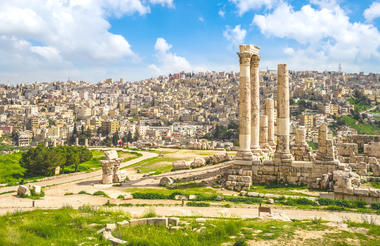
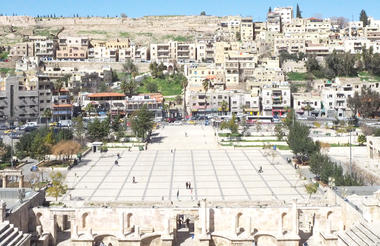
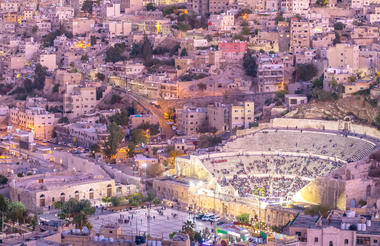
Wadi Musa means ‘Valley of Moses’ in Arabic and it is believed it is here that Moses struck water from rock at Ain Nusa (Moses’ Spring). It is a modern town in western Jordan that acts as a gateway to one of the country’s most spellbinding and awe-inspiring archaeological attractions - the ancient city of Petra. Circa 1 BC, a Bedouin tribe called the Nabateans carved a series of vast, elaborate palaces, temples, tombs and shrines into the area’s red-pink sandstone cliffs. The ‘Rose City’s’ decorative façades - complete with stately columns and intricate sculptures - reflect the exceptional engineering and architectural wisdom of the era.



Set on the northern banks of the Dead Sea in Jordan, the town of Swemeh (or Sweimeh) offers its visitors a holiday paradise of luxury resorts, hotels and spas. Sunbathe on soft sandy beaches, indulge in massages and body treatments, or learn (or take part in) an array of outdoor sports. Activities on offer include hot air ballooning, skydiving, microliter trips, and floating in the salty water. The water’s high level of salt makes floating on one’s back much easier (but watch out- normal swimming is difficult). Attractions nearby include the historic Mount Nebo; the ‘City of Mosaics’; the sacred ‘Lot’s Cave’, and the ‘Baptism Site’ where it is believed Jesus was baptised; the Dead Sea Museum; the wonderful series of hot springs and waterfalls at Hammamat Ma'in; and the Mujib Reserve, home to incredible birdlife and the spectacular Jordan Grand Canyon and waterfall.



Egypt is one of Africa’s major tourist destinations, with the main drawcards being the Red Sea, Egyptology and the Nile. The Pyramids of Giza, the Sphinx and the Valley of the Kings need no introduction in the world of antiquity, the sun-soaked beaches of the Red Sea with their scuba diving are a massive attraction to those from colder climes, and a cruise on the Nile floods back memories of Cleopatra. Aside from these famous attractions, this desert country houses ancient ruins and mystical Oases, and in Cairo, ancient cultures remain, blending with the very modern. Egypt offers so much more than its world-famous pyramids. Visitors can enjoy desert trekking, scuba diving, golfing, fishing, bird watching or floating along the Red Sea.
Resting on the banks of the River Nile, Cairo is the mythical Egyptian capital that has been inhabited for over 6000 years. The dynamic metropolis is an exciting commingling of historical and contemporary offerings, vibrant streets and diverse neighbourhoods. The numerous heritage sites offer a glimpse into its Islamic and Coptic histories, including the renowned Al-Muiz street, Amr Ibn Al-As Mosque, the Hanging Church, and the Saint Samaan Monastery. The bustling tourist hub of Tahrir Square features the world-renowned Egyptian Museum displaying an array of antiquities, including mummies and King Tutankhamun artefacts. After that immersive foray into the past, pull yourself to the present and experience modern Cairo. Visit the baladi bars of downtown Cairo, shop at the Khan al-Khalili Bazaar, watch the sunset from the impressive Cairo Tower, or be entertained at the stately Cairo Opera House. The city's diverse nightlife options range from the traditional bars and coffee houses of downtown Cairo to the upscale Western clubs and bars of the affluent neighbourhood of Zamalek.
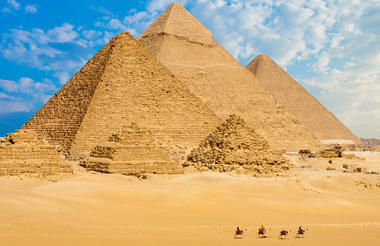
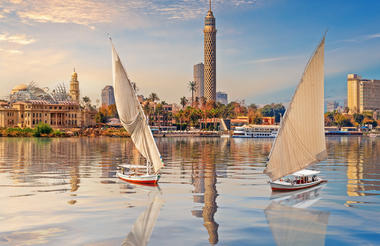

Situated on the east bank of the Nile in the south of Egypt, Aswan is an arid, modern and popular city with a relaxing atmosphere. The city is home to a number of significant archaeological sites and also makes an excellent base for exploring the many world-class attractions in the surrounding area. Visitors can enjoy the beautiful views by way of slow walks along the wide corniche, or while dining on fresh seafood at one of the town’s charming floating restaurants. In the evenings, dancers, musicians, and folklore troupes perform at the Cultural Centre, providing memorable entertainment. City highlights include a large, lively market, and the Nubian Museum, which showcases some of Southern Egypt’s most important historical artefacts.



Situated north of Aswan, on the eastern bank of the Nile River in Egypt, the ancient city of Kom Ombo is famous for its unusual riverside double-temple honouring Horus the Elder (Haroeris) and Sobek (the crocodile god), and its attached crocodile museum. The building is especially distinctive in its dual, mirror image structures and even features a double altar. At the crocodile museum, visitors can see crocodile mummies and other artefacts which give insight into the sacred place the animals had in ancient times. The town is also notable for being home to an original community of peasant farmers as well as a large population of Nubian people and is surrounded by beautiful sugar-cane fields. Kom Ombo makes for a fantastic day trip from both Luxor and Aswan and is a popular stop on river cruises.



Situated along the west bank of the Nile River, the Valley of the Kings is home to the famous tomb of King Tutankhamun, one of the most famous archaeological sites in the world. Also known as Biban el-Moluk, the ‘Gates of the Kings’, the Valley of the Kings is the ancient burial site of many New Kingdom pharaohs and powerful nobleman laid to rest between the sixteenth and eleventh centuries B.C. The valley contains 63 unique tombs and chambers and the entire valley has been listed as a UNESCO World Heritage Site. Visitors can explore this ancient landscape featuring arid lunar terrain, discover the hidden tombs and view the work of the finest artisans of the ancient world, who paid homage to the pharaohs in detailed frescoes and wall reliefs.



Resting on the west bank of the Nile River between Esna and Aswan, the historic town of Edfu is the location of the famous Temple of Horus. Considered the best-reserved temple in Egypt and dating back to the Ptolemaic times (237 - 57 BC), the temple has played a dramatic role in today’s understanding of ancient Egypt, including our knowledge of its religion, lifestyle, and language. The temple is decorated with intricate and varied scenes depicting marriages, deities, and the birth of its namesake god, and exhibits a combination of both Egyptian and Greek architectural elements. Other highlights include the ruins of one of seven small provincial step pyramids, and two temples considered second only in importance to the Temple of Dendera. Modern Edfu is a bustling hub producing renowned pottery.



As previously described








